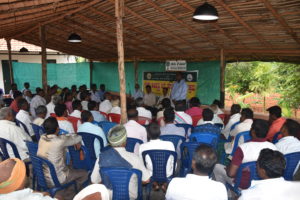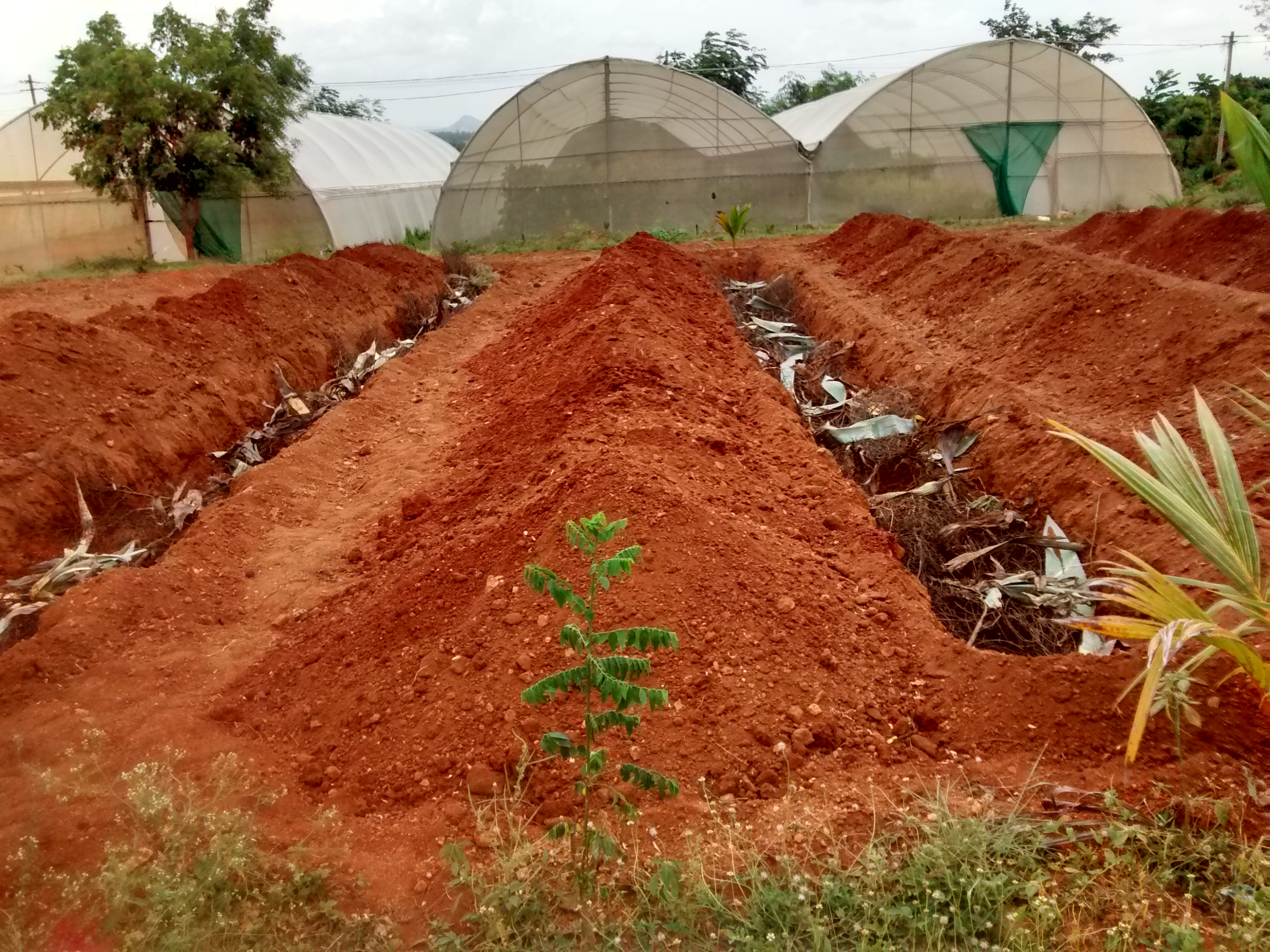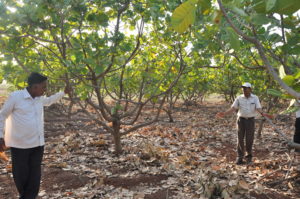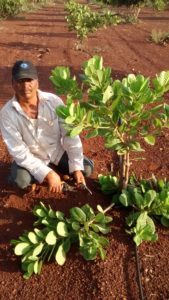GO ECOLOGICAL IN CASHEW FARMING

 Ecological Farming: 3
Ecological Farming: 3
Knowledge Sharing Experience with Farmers
Summary of the discussion of one day interaction cum field demonstration program on cashew cultivation organized by Horticulture Dept., Mandya and Belavala Foundation at Belavala Ecological Farm, Belagola on 11th Nov 2017. The participants including 105 farmers and field officers had responsive interaction with resource persons ( Dr.Ramakrishnappa and Dr. Vishakanta, Belavala Foundation, Mr. Raju, DDH, Mandya, Mr.Keshavamurthy, AIR, Mysore and Sri Veeresh, cashew farmer, Hejjala, Maddur Tq).
The discussion was focused primarily on cultivation of cashew as an alternate crop to augment the situation arising out of irregular rain fall, recurring drought, depleting crop diversity and diminishing agricultural income.

Cashew is a dry land crop: The crop prefers good soil moisture and nutrition, but not the best crop for canal areas. Clay, alkaline and marshy soils are not suitable.
Go for suitable varieties and spacing: Grafted saplings of 2.5 to 3 ft in height and without curly roots are ideal. Ullal 1&3,Chintamani 1 and Vengurla 4 & 7 are most suitable for Mandya, Mysore and Chamarajanagar districts. Traditional spacing is 25×25 ft. With drip irrigation, high density planting at either 12×12 or15x15 ft spacing can be adopted with compulsory pruning every year. The Dept of Horticulture recommends a compromising spacing of 20×20 ft which appears to be ideal.

Take care of planting requirements: June to September are the ideal months for planting. In dry lands, it is always beneficial to plant in trenches of 2 ft width and 2.5 ft depth. Opening trenches against slope is helpful in retention of soil and moisture including nutrients. It is advisable to fill the trenches with decomposable biomass up to 1.5 ft, cover with soil and give 45 to 60 days time for degradation. While planting , open a small pit in the trench , add 15 kgs of aptly decomposed compost enriched with Ghana (solid) Jeevamrutha and mix well with the soil. The seedlings need firm support for good stand and establishment. Bio mass mulching around the plant is helpful further in moisture conservation and enhancing microbial life which is the key activity in ecological farming.


Bio manuring is ideal : During the 2nd year , either in June or July provide 10 kgs of well decomposed compost enriched with Ghana (solid) Jeevamrutha per plant. The quantity may be increased by 2 kgs every year. In subsequent years, spray Drava (liquid) Jeevamrutha in September and Panchaghavya in October, to enhance flowering . Creating moisture stress by withholding irrigation in Nov and Dec months is helpful in opening of flower buds. Repeat Jeevamtrutha spray in December and January months for better fruit set.
Follow mixed cropping system: Growing friendly dry land crops in between cashew is always advantageous to both farmers and nature. Planting 2 lines of Cashew and one line of either Mango or Custard apple or Sandalwood or all in alternate pits would add to the farm diversity and enhance overall output of the farm. Multi cropping helps in better control of pest and diseases too. Growing green manure crops during early monsoon, pulses and millets in rainy season and vegetables in summer as inter crops will add value to soil and improve farm income.


Manage plant canopy: Plant height and spread requires continuous regulation in high density plantations. All the side branches need pruning till the plant attains the height of about 3.5 ft. At this level, remove the terminal bud and encourage branching. Every year, after the crop harvest, the canopy requires maintenance by trimming, in order to reduce dead wood and water shoot development. The height of the plant in any case to be maintained less than 10 ft and the spread depending on the row width to tap maximum sun light. 

Canopy management is crucial in high density planting
Tea Mosquito is the major pest bothering cashew farmers: The nymphs and adults of this insect suck sap from terminal twigs, buds and leaves as a result the leaves become curled up and deformed. The shoots show die back symptoms. Eventually the terminals of cashew will dry up leading to total loss of the crop. Growing mango and cashew together can avoid this pest to certain extent as the red ants of mango are the best prey on nymphs of Tea mosquito. Spaying Bio digester extract with neem oil regularly during new flushing, flowering and fruiting is effective. Stem and shoot borers can be controlled by injecting neem oil through the holes made by the borers.
Leaf spot and Die back diseases can be managed: These fungal diseases may surface during monsoon, and affect the crop yield some times. Spraying Bordeaux mix (Copper sulphate and lime) before the onset of monsoon helps in controlling them.
Simple harvesting and drying practices: No need to pick the fruits from the tree, gather the ones fallen on the ground and stack them under shade. Once in 3-4 days, remove the seeds from fruits and dry them under sun properly before storage.
Yield and income: The grafted seedlings start yielding from the 3rd year and stabilized yield of 8-10 kg raw kernel per plant can be obtained from the 7th year on wards. But the potential is well up to 15 kg per plant under intensive management practices. Presently raw kernels are sold at Rs 200 per kg.
